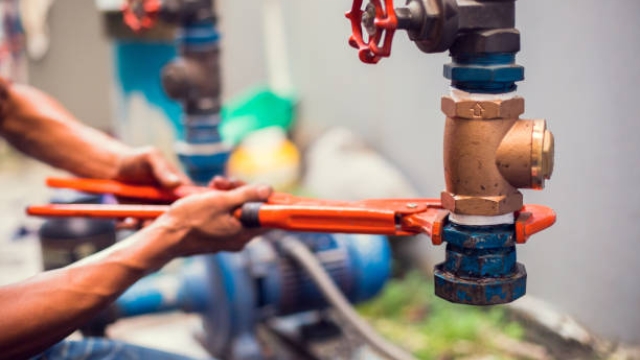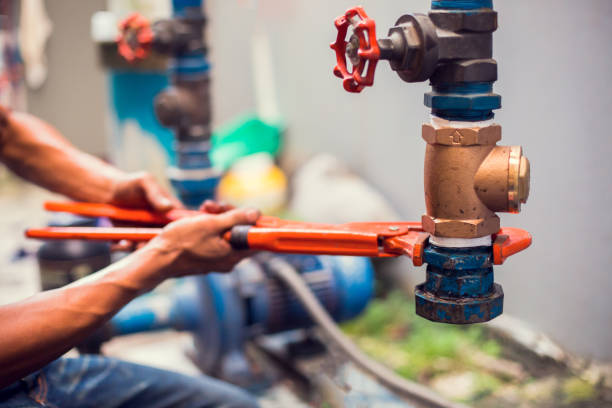Whether you’re a homeowner, a renter, or just someone interested in the inner workings of your home, understanding plumbing is essential. From fixing a stubborn leak to upgrading your bathroom with luxurious fixtures, having a comprehensive plumbing guide by your side can save you not only time and money but also the headache of dealing with unforeseen issues. In this article, we will dive deep into the world of plumbing, exploring everything from common problems to advanced techniques, empowering you to tackle any plumbing challenge that may come your way. So, grab your wrench and let’s begin our journey into the fascinating world of pipes and faucets!
Diagnosing Common Plumbing Issues
Plumbing problems can be frustrating and disruptive to our daily lives. Thankfully, many common plumbing issues can be diagnosed easily, allowing you to take appropriate action or seek professional assistance. In this section, we will explore three of the most common plumbing problems and how to identify them.
Leaky Faucets: Leaky faucets are not only annoying but can also waste a significant amount of water over time. To diagnose a leaky faucet, carefully listen for any dripping sounds when the faucet is turned off. Additionally, check the base of the faucet for any visible water accumulation or dampness. A leaky faucet may be caused by worn-out internal components, such as a faulty washer or O-ring.
Clogged Drains: Clogged drains are a common plumbing issue in households. To diagnose a clogged drain, you may notice that water is draining slower than normal or not draining at all. Unpleasant odors coming from the drain can also indicate a blockage. Pay attention to any gurgling or bubbling sounds when draining water. In the case of a clogged drain, the blockage may be caused by a buildup of hair, soap scum, food particles, or other debris.
Running Toilets: A running toilet can waste a significant amount of water and inflate your water bill. To diagnose a running toilet, remove the lid from the tank and observe if the water level is reaching the overflow tube. If the water level is above the overflow tube’s opening or if you hear water running inside the tank even when it’s not being flushed, you likely have a running toilet. The cause may be a faulty flapper valve or an issue with the fill valve assembly.
By being aware of these common plumbing issues and knowing how to diagnose them, you can save both time and money in dealing with plumbing problems. However, if you are unsure or uncomfortable with handling any plumbing repairs, it is always best to seek the assistance of a professional plumber.
Essential Tools and Materials
In order to successfully tackle plumbing projects, it is important to have the right tools and materials at your disposal. Here are some essential items that every aspiring plumber should have in their toolkit.
Wrenches: A good set of wrenches is a must-have for any plumber. Adjustable wrenches, also known as crescent wrenches, are versatile and can be used for a variety of tasks. Pipe wrenches, with their strong grips, are essential for tightening or loosening pipes and fittings.
Plunger: This humble tool is a plumber’s best friend when it comes to dealing with clogs. Whether it’s a sink, toilet, or bathtub drain, a sturdy plunger can help clear the blockage and get things flowing smoothly again.
Pipe Cutters: When it comes to cutting pipes, a pipe cutter is the way to go. These handy tools allow for precise cuts, ensuring that pipes fit together properly. Look for pipe cutters that are adjustable and can handle different sizes of pipes.
Pipe Tape: Also known as Teflon tape, this thin yet durable tape is used to create watertight seals on threaded connections. It helps prevent leaks by filling in any gaps between threads, ensuring a secure and leak-free joint.
Pipe Fittings: Having a variety of pipe fittings on hand is crucial for any plumbing project. From couplings and elbows to tees and unions, these fittings allow you to connect pipes in different configurations and angles, making it easier to navigate tight spaces.
Pipe Sealant: For added protection against leaks, pipe sealant is a must. This specialized sealant is applied to threaded connections before screwing pipes together. It helps create a watertight seal, ensuring that joints remain leak-free over time.
Pliers: Pliers are another essential tool for any plumber. They come in various shapes and sizes, each serving a different purpose. Whether you need to grip, twist, or cut, having a reliable set of pliers in your toolkit will make your job much easier.
Find a plumber
Remember, having the right tools and materials is crucial for any plumbing project. By being prepared with these essentials, you’ll be well-equipped to tackle any leak or plumbing issue that comes your way.
Tips for DIY Plumbing Repairs
Maintaining the plumbing system in your home can save you both time and money. While some plumbing repairs require professional expertise, there are plenty of tasks that you can tackle on your own. Before you grab your toolbox, here are a few essential tips to help you successfully carry out DIY plumbing repairs.
First and foremost, always turn off the water supply before attempting any repairs. This will prevent any water leakages or unexpected sprays that can not only cause a mess but also potentially damage your fixtures and pipes. Most plumbing fixtures have individual shut-off valves, so locate them and make sure they are fully closed.
When it comes to fixing leaks, make sure to thoroughly inspect the affected area for any cracks, holes, or loose fittings. Use appropriate tools such as pipe wrenches or adjustable pliers to tighten connections or replace faulty parts. Remember to use plumber’s tape or sealant to ensure a watertight seal and prevent future leaks.
Additionally, it is crucial to have a basic understanding of your plumbing system. Familiarize yourself with the different types of pipes and connectors in your home, as well as their respective functions. This knowledge will help you identify the source of any plumbing issues and troubleshoot them more effectively.
In conclusion, with the right preparations and knowledge, you can confidently handle various DIY plumbing repairs. Remember to shut off the water supply, inspect for leaks, and understand your plumbing system. By doing so, you’ll be well-equipped to tackle common plumbing problems and keep your home in optimal condition.

